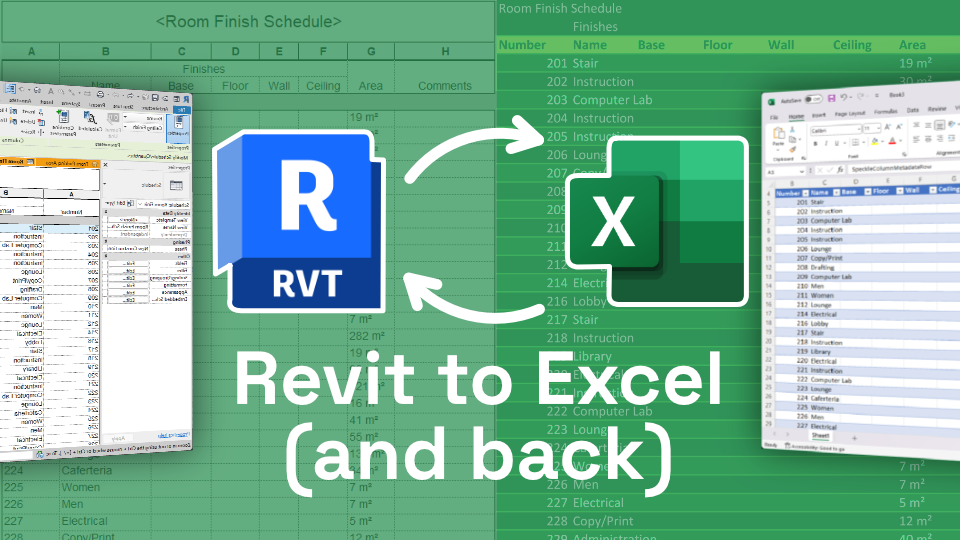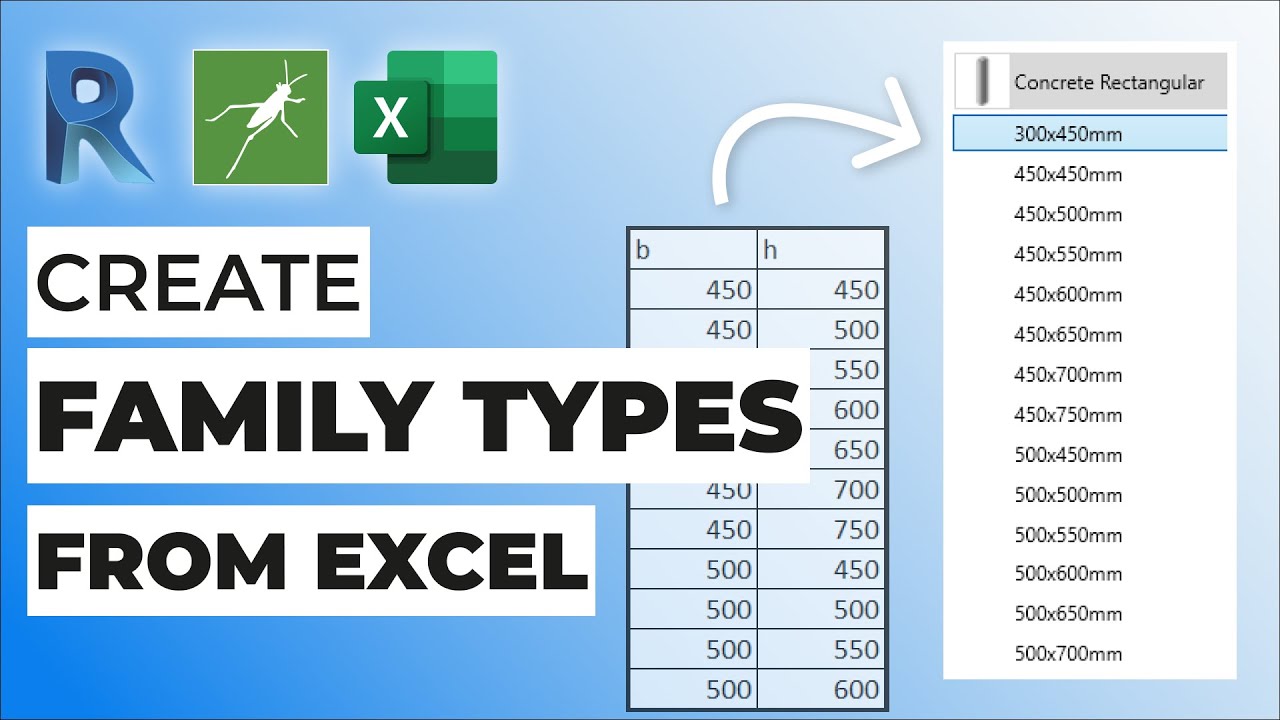Boost Your Design Game with Crucial Revit Add Ins
Wiki Article
Damaging Barriers: Excel Importation Techniques for Advanced Revit Users
Discover different information importation methods and master Excel assimilation to boost your Revit modeling capabilities. With our tricks and suggestions, you can conquer importation obstacles and come to be a true specialist in making use of Excel for your Revit projects.Advanced Revit Users: Leveraging Excel for Importation
You can quickly utilize Excel for importation as a sophisticated Revit user. Excel is an effective tool that can substantially boost your workflow and effectiveness in Revit. With its capability to manage huge quantities of information and execute intricate calculations, Excel can be a valuable property in managing and organizing your job info.One method to take advantage of Excel for importation is by utilizing the "Web link Excel" attribute in Revit. This function permits you to link an Excel spreadsheet directly right into your Revit task, enabling you to update and synchronize information between both programs. This can be especially valuable when dealing with routines or tracking changes in your job.
Another way to make use of Excel is by making use of the "Import/Export" feature in Revit. This attribute allows you to import and export information between Revit and Excel, providing you the versatility to work with information in both programs. You can import information from Excel into Revit to create aspects such as doors, spaces, or walls, and you can also export data from Revit to Excel for additional evaluation or reporting.

Exploring Data Importation Techniques in Revit Using Excel
Exploring how to import data from Excel into Revit uses reliable techniques for integrating information. When you import information from Excel, you can perfectly transfer information such as space schedules, product checklists, and equipment information into your Revit project. This process permits you to conserve effort and time by staying clear of manual information access.To import data from Excel into Revit, you can use the "Import/Export" attribute. This feature allows you to map the Excel information areas to the corresponding Revit specifications, guaranteeing that the info is appropriately appointed within the model. By choosing the appropriate import alternatives, you can control just how the information is imported and how it engages with your project.
An additional method for importing data from Excel right into Revit is by utilizing Eager beaver. With Eager beaver, you can create personalized scripts that import information from Excel and control it within your Revit job.
Understanding Excel Integration for Advanced Revit Modeling
One crucial technique is importing data from Excel spread sheets directly into your Revit model. With a few easy actions, you can map the Excel columns to the equivalent Revit specifications and import the data accurately.One more beneficial technique is exporting data from Revit to Excel. This allows you to remove information from your design, such as routines or material quantities, and analyze it in Excel making use of formulas, graphes, or other powerful tools. By leveraging the capacities of Excel, you can perform intricate calculations, create personalized records, and gain useful understandings into your job.
Along with data transfer, Excel integration can automate recurring jobs in Revit. By creating macros or scripts in Excel, you can automate procedures like creating sights, creating sheets, or using common households - revit plugins. This not just conserves time yet also guarantees consistency throughout your job
To master Excel assimilation in Revit, it is crucial to comprehend the information structure and how Revit communicates with Excel. By acquainting on your import excel into revit own with the readily available tools and techniques, you can unlock the complete capacity of Excel combination and take your Revit modeling to the next degree.
Overcoming Importation Obstacles: Excel Techniques for Revit Experts
When getting rid of importation obstacles, it's essential to be familiar with effective Excel techniques that can profit experts in Revit. As an innovative Revit individual, you recognize the value of flawlessly importing data from Excel into your projects.
Another useful strategy is making use of the "Transpose" function in Excel. This allows you to convert data from rows to columns or the other way around. When importing data into Revit, this can be specifically practical when you have information in a vertical style in Excel, but you require it to be in a horizontal style in Revit.
Moreover, utilizing Excel solutions such as VLOOKUP and INDEX-MATCH can substantially help in mapping information from Excel to Revit. These solutions permit you to look for specific worths in Excel and retrieve matching information from an additional column. When importing large datasets into Revit., this can save you time and effort.
Excel Data Importation Advice for Advanced Revit Users
By acquainting on your own with effective Excel techniques and ideas, you can enhance your data importation procedure as a sophisticated individual of Revit. Excel is an effective tool that can considerably help with the importation of information into Revit, saving you time and raising your efficiency. One useful idea is to utilize the "Text to Columns" attribute in Excel to separate data right into different columns based on a delimiter. This can be specifically practical when you have data in a single column that needs to be split right into numerous columns in Revit. Furthermore, making use of Excel's "Paste Special" feature permits you to paste data from Excel right into Revit while preserving formatting, such as cell color or font style. This can be specifically helpful when importing information that needs certain format in Revit. One more valuable trick is to utilize Excel's "Change and locate" function to swiftly make adjustments to your information prior to importing it right into Revit. You can conveniently change specific text or characters with others, saving you the time and effort of manually editing the information in Revit. By making use of these Excel pointers and methods, you can enhance your data importation process and come to be a lot more efficient in making use of Revit.
Conclusion
You have actually now learned beneficial methods for importing information from Excel into Revit as an advanced individual. By leveraging the power of Excel integration, you can simplify your modeling process and get over any type of importation tests that may develop. With these techniques and pointers, you will have the ability to master information importation and enhance your Revit abilities. Go ahead, break those obstacles and excel in your Revit jobs!
When importing information right into Revit, this can be especially practical when you have information in a vertical style in Excel, yet you need it to be in a straight layout in Revit.
Additionally, making use of Excel formulas such as VLOOKUP and INDEX-MATCH can considerably help in mapping information from Excel to Revit. Furthermore, making use of Excel's "Paste Unique" feature allows you to paste information from Excel right into Revit while keeping format, such as cell color or font design.
Report this wiki page